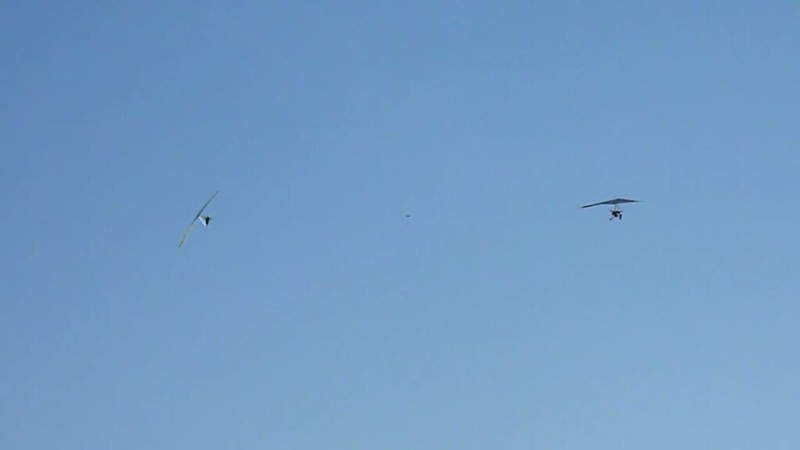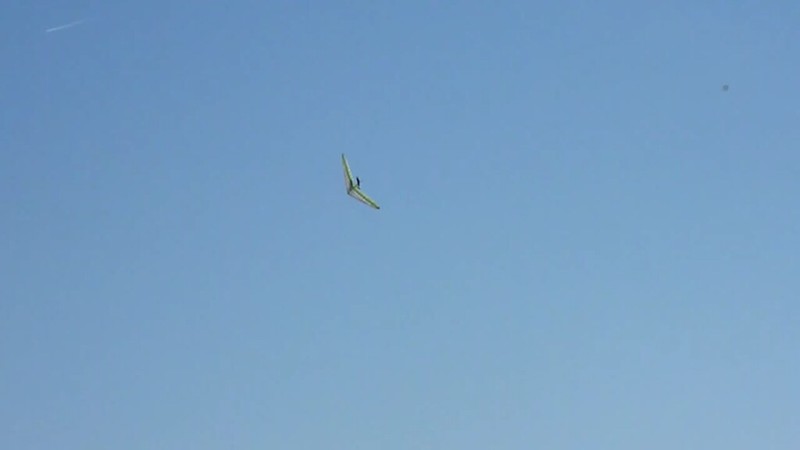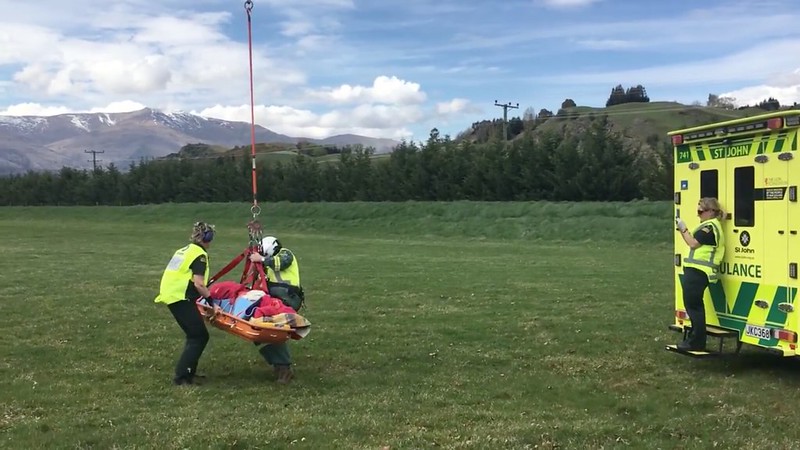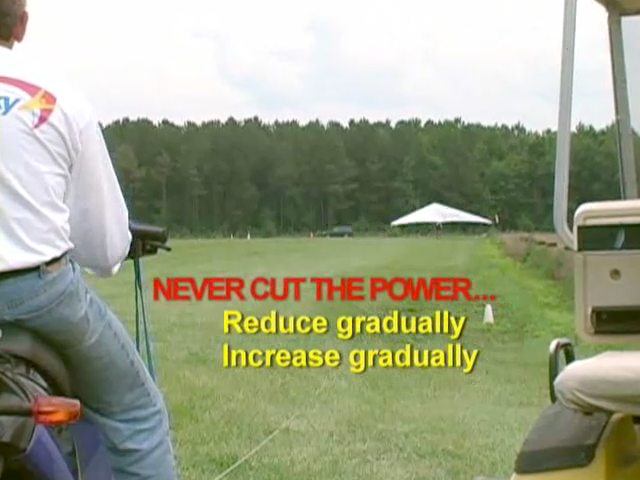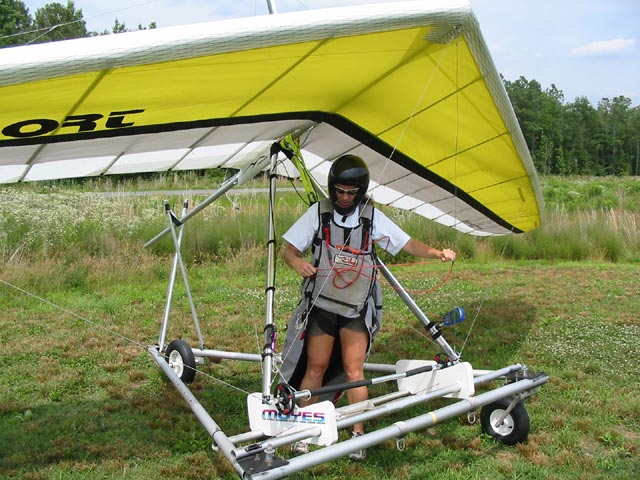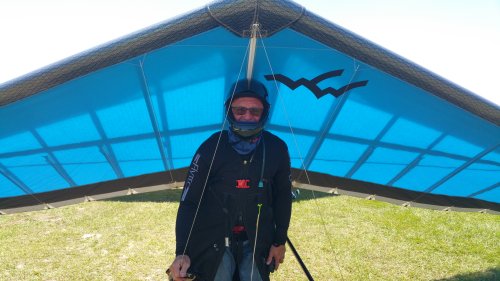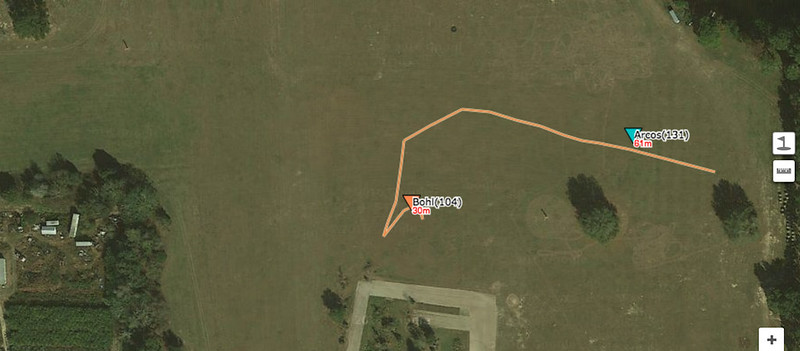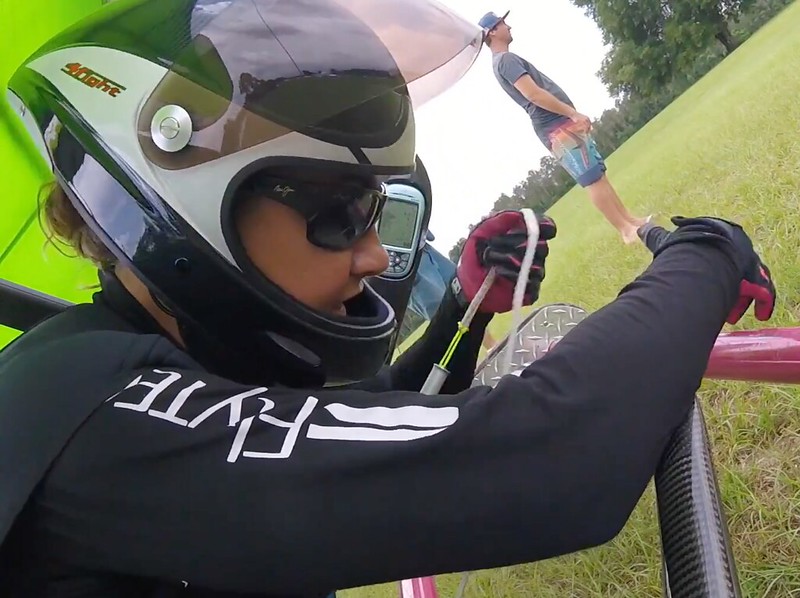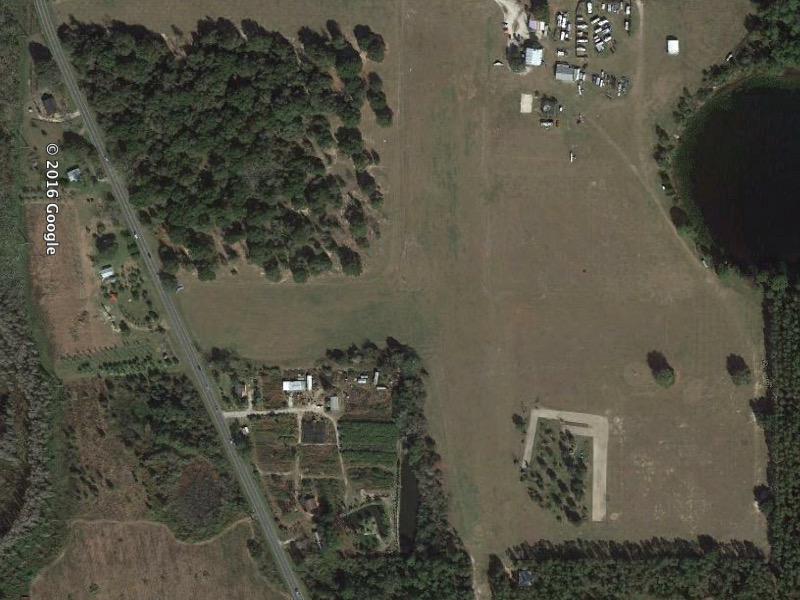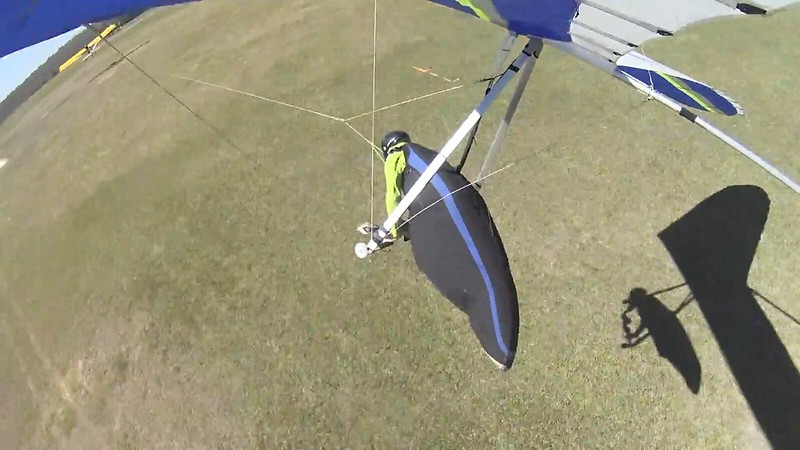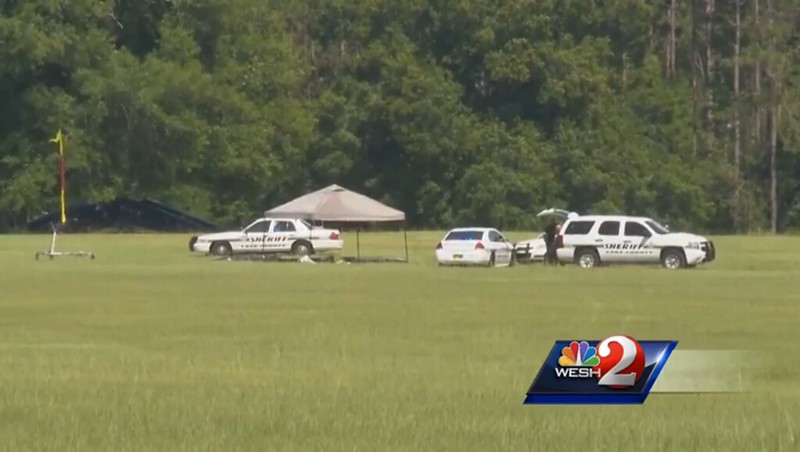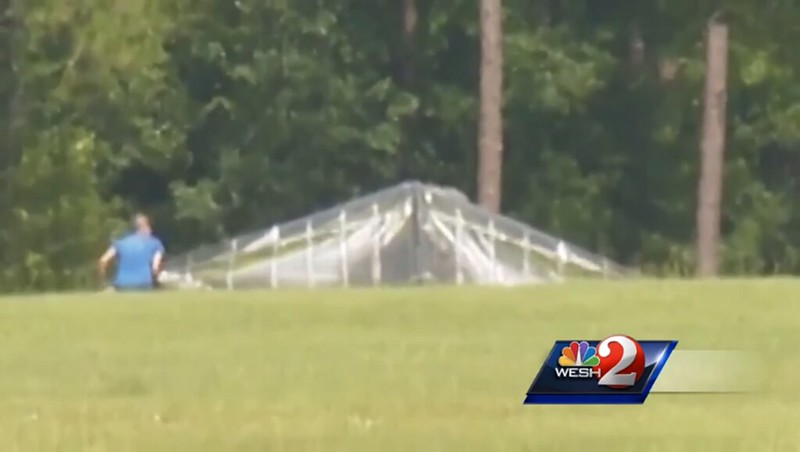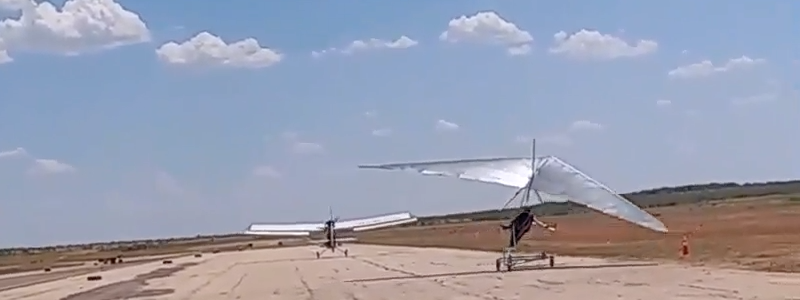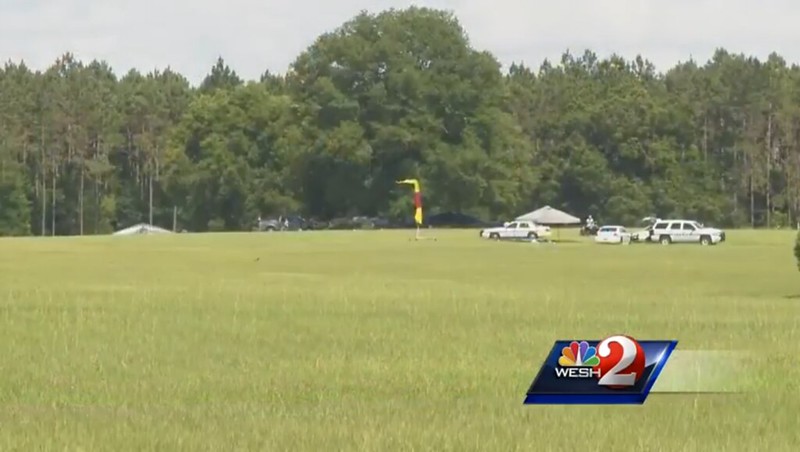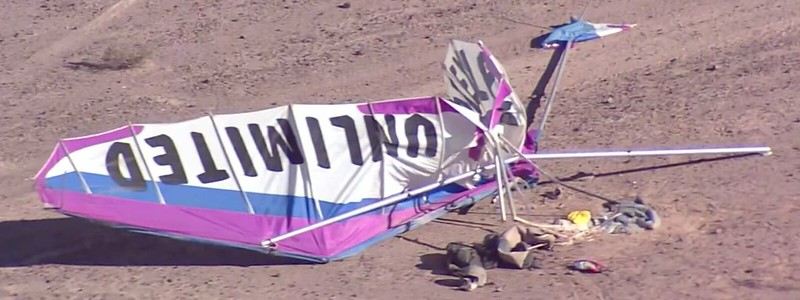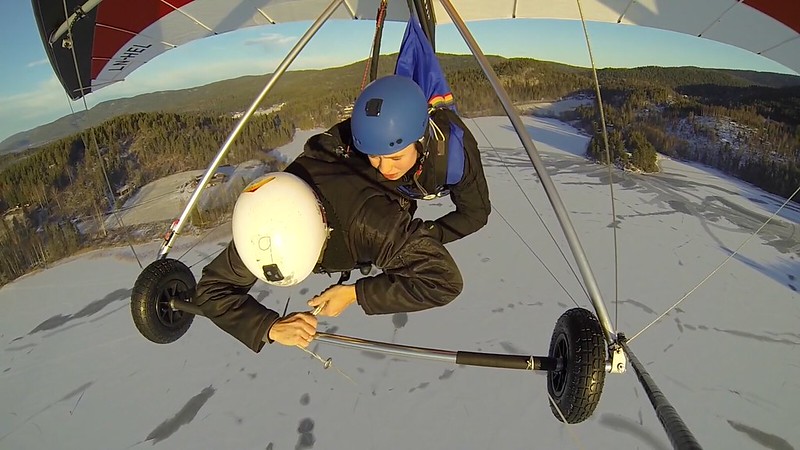I've beaten this one up a lot before - most extensively in a series of long posts in "Weak links" starting at:
http://www.kitestrings.org/post4134.html#p4134
2013/04/08 23:45:48 UTC
Back then the Zack Marzec Standard Aerotow Weak Link inconvenience fatality was still fresh meat and I was writing from that perspective.
When Zack bought it I had these motherfuckers and their scams pretty much totally figured out, had gone whistleblower and been retaliated against nearly half a decade prior, Kite Strings was fully weaponized, we did some major irreversible damage.
When Holly slammed in I was still half clueless, not understanding why everything was really starting to smell funny, standing mostly on my own, pulling punches 'cause I still had a flying a career I wanted to pursue, limiting myself to the local wire, thinking there had to be a few fundamentally decent and reasonably competent individuals in positions of power and control.
Both of these crashes had HUGE implications for u$hPa and the Flight Park Mafia. Steve Exceptionally-Knowledgeable / Instructor-Of-The-Year / Scooter-Tow Wendt was u$hPa's poster boy and the Holly Crash - not to mention the Bill Priday wind dummy launch at Whitwell shortly thereafter - could've EASILY wiped Steve and Blue Sky permanently off the map and done major damage to u$hPa. Mike Haas - less than a year before Holly - was majorly problematic. Jean Lake...
http://www.hanggliding.org/viewtopic.php?t=32673
This is terrible
Dave Pendzick - 2015/03/30 17:42:41 UTC
This is not going to end well for us...
Great call, Dave. And they didn't even sue anybody for murdering their kid.
But anyway... This one again after having just pretty thoroughly cracked all the Holly codes and with a fair bit better perspective. Not as much redundancy as I was afraid I might be doing.
Dennis Pagen - 2005/01
SUMMER 2004 ACCIDENT REPORTS
Recently two unrelated hang gliding accidents occurred in Europe, which may have some lessons for us. I had flown with and knew both pilots. My descriptions and analysis are based on eyewitness reports in the first case and the fact that I witnessed and talked at great length to the pilot as well as examined the wreckage in the second case.
FATAL TOWING ACCIDENT
The first accident occurred in Germany at an aerotowing competition. The pilot launched with his Litespeed and climbed to about 40 feet when he encountered a thermal that lifted him well above the tug. After a few moments, the glider was seen to move to the side and rapidly turn nose down to fly into the ground, still on tow, in a classic lockout maneuver. The impact was fatal.
Analysis
This pilot was a good up-and-coming competition pilot. He had been in my cross-country course three years ago, and this was his second year of competition. What happened to him is not too unusual or mysterious. He encountered so much lift that although he was pulling in the base bar as far as he could, he did not have enough pitch-down control to get the nose down and return to proper position behind the tug. This situation is known as an over-the-top lockout.
I am personally familiar with such a problem, because it happened to me at a meet in Texas. Soon after lift-off the trike tug and I were hit by the mother of all thermals. Since I was much lighter, I rocketed up well above the tug, while the very experienced tug pilot, Neal Harris, said he was also lifted more than he had ever been in his heavy trike. I pulled in all the way, but could see that I wasn't going to come down unless something changed. I hung on and resisted the tendency to roll to the side with as strong a roll input as I could, given that the bar was at my knees. I didn't want to release, because I was so close to the ground and I knew that the glider would be in a compromised attitude. In addition, there were hangars and trees on the left, which is the way the glider was tending. By the time we gained about 60 feet I could no longer hold the glider centered--I was probably at a 20-degree bank--so I quickly released before the lockout to the side progressed. The glider instantly whipped to the side in a wingover maneuver. I cleared the buildings, but came very close to the ground at the bottom of the wingover. I leveled out and landed.
Analyzing my incident made me realize that had I released earlier I probably would have hit the ground at high speed at a steep angle. The result may have been similar to that of the pilot in Germany. The normal procedure for a tow pilot, when the hang glider gets too high, is to release in order to avoid the forces from the glider pulling the tug nose-down into a dangerous dive. This dangerous dive is what happened when Chris Bulger (U.S. team pilot) was towing John Pendry (former world champion) years ago. The release failed to operate in this case, and Chris was fatally injured. However Neal kept me on line until I had enough ground clearance, and I believe he saved me from injury by doing so. I gave him a heart-felt thank you.
The pilot in the accident under discussion was an aerodynamic engineer. He had altered his glider by lengthening the front cables and shortening the rear cables to move his base tube back. The amount was reportedly 10 centimeters, or about 4 inches. This is well within the acceptable range, according to Gerolf Heinrichs, the Litespeed designer. Why the pilot altered his bar position in this manner is anyone's guess, but my guess is that it was because he felt the bar was too far out on the glider with the VG off. This Litespeed was the pilot's first topless glider and I expect he wasn't informed that most of the new topless gliders experience a great movement of the base tube as the VG is pulled through its range. The result is that the bar is so far out and the pitch pressure so strong that with the VG off, that the standard procedure is to take off and land with at least 1/4 VG. If the pilot didn't know this he would have been tempted to move the bar.
Factors that attributed to the accident in various degrees were the pilot's experience, the conditions and the alteration of the base tube. To begin, he wasn't greatly experienced in aerotowing, although he had learned and spent much of his flying with surface tow. It is difficult to assess the effect of the turbulence, but suffice it to say that it was strong enough to project him upward, well above the tug. Finally, the alteration of the basetube position could have been a contributing factor because he certainly would have had more pitch authority if he hadn't done that. It is impossible to tell, but perhaps the thermal that lifted him would not have done so as severely if he had had a bit more pitch travel.
What We Can Learn
To begin, alteration of our gliders should not be done without full agreement and guidance from the factory or their trained representatives. Even with such approval, be aware that the factory might not know how you will be using your equipment. Changing the pitch range of a glider is a fairly serious matter and should only be done with full understanding of all the effects.
Secondly, over-the-top lockouts are not frequent, but common enough in big-air towing that tow pilots should all have a plan to deal with them. Think about this: When we are lifted well above the tug, the tow system forces becomes similar to surface towing, with the limit of tow force only being the weak link. The susceptibility to a lockout is increased in this situation.
My experience leads me to believe that a strong thermal hitting when low can push you vertically upwards or sideways before you have time to react. If this happens when I am low, I fight it as hard as I can until I have clearance to release safely. If I am high above the tug, I stay on line with the bar pulled in as far as possible and keep myself centered if at all possible. I fully expect the tug pilot to release from his end if necessary for safety, but in the case of a malfunction, I would release before endangering the tug.
We are taught to release at the first sign of trouble, and I fully support that general policy, but in some cases, the trouble happens so fast and is so powerful that a release low would have severe consequences. In my case, I was instantly high above the tug with a strong turn tendency and a release at that point would have been ugly. The main point for us to understand is that we must gain our experience in gradually increasing challenges so we can respond correctly when faced with different emergencies. It should be made clear again that a weak link will not prevent lockouts and a hook knife is useless in such a situation, for the second you reach for it you are in a compromised attitude.
Thirdly, experienced pilots should be aware that towing only from the shoulders reduces the effective pull-in available to prevent an over-the-top lockout. Like many pilots, I prefer the freedom of towing from the shoulders, but I am aware that I must react quicker to pitch excursion. Sometimes reactions aren't quick enough and emergency procedures must be followed. It seems to me that we shouldn't be overly eager to encourage lower airtime pilots to adopt this more advanced method of aerotowing. Normally, we tow topless gliders with about 1/3 VG pulled to lighten pitch forces and increase speed. Intermediate gliders are often towed as much as 1/2 VG pulled for the same reasons. Pilots must understand these matters when aerotowing.
Finally, I think it is appropriate to remind all dealers, instructors and pilots in general to inform their customers and friends that the new topless gliders exhibit the notable bar movement with VG travel as explained above. As such, it is normal to take off and land with 1/4 VG on in order to place the bar in a position to roll easier and to reduce the pitch pressure. It is much easier to maintain safe control speed with the VG pulled 1/4.
The first accident occurred in Germany at an aerotowing competition. The pilot launched with his Litespeed and climbed to about 40 feet when he encountered a thermal that lifted him well above the tug.
MOYES Litespeed, right? Pro toad? We're gonna have another pro toad Moyes product launch crash - near fatal - five months after this magazine hits the mailboxes. Any chance you'll be able to dedicate half an hour of your precious time to submitting a comment?
The impact was fatal.
How did he die? Was the suffering of fatal injuries an issue?
I am personally familiar with such a problem, because it happened to me at a meet in Texas.
- This is undoubtedly the 2004 US Nationals at Big Spring 08/01-07. Near fatal. How come we're just hearing about it now and you're so very obviously deliberately not giving us the venue and date? Ditto for the total fatal on which you reported. And now we've removed any doubt about the focal point of your safe towing system. If you'd tried to use a Tad-O-Link you'd have been sent to the back of the line to swap it out for a safe extremely consistent one.
- When? Before or after Germany? If it were:
-- before then why the hell didn't you put out the advisory that might have saved this guy's life?
-- after then why the hell were you:
--- still going up pro toad in nuclear thermal conditions?
--- allowing Davis to dictate the use of appropriate bridles and weak links?
-
IT didn't happen to you.
YOU happened to you.
- Extremely interesting that Dennis Pagen gets his stupid ass damn near killed at launch at the US Nationals at Big Spring and there was never any of a hint of a comment about the incident on The Davis Show or anywhere else - until now. Guess we didn't want to get people thinking and talking about the focal point of our safe towing system too much, did we?
Soon after lift-off the trike tug and I were hit by the mother of all thermals.
Bullshit.
- Neither of you WERE HIT by the thermal. Both of you flew into it. This shit happened right after takeoff so if windsocks and/or streamers had been in place and were being monitored this launch could've been delayed 45 seconds. You assholes centerpunched the thermal and you just barely survived. If you'd hit a side of it things might well have looked like:
42-1520
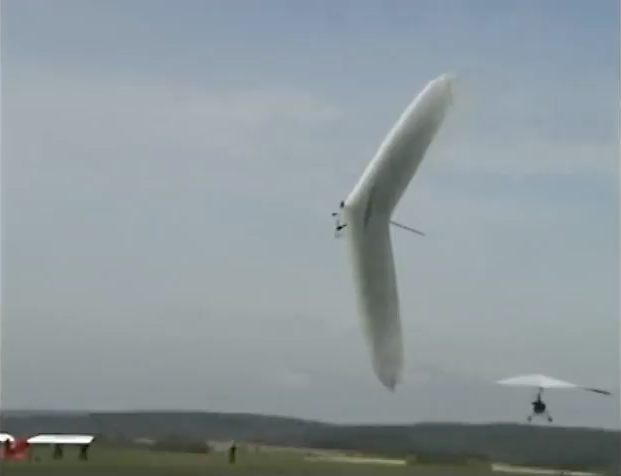

46-1613
- You flew into it voluntarily/deliberately. You saw the tug get blasted up and had several seconds to abort the tow. And if I'd been flying the total crap you were I wouldn't have wasted a lot of time doing it. But there's no way in hell I'd ever fly the total crap you were to begin with. It's kinda stupid to talk about optimizing safety for fringe activity.
- Also your very experienced tug pilot, Neal Harris, knew what was going on, that you were flying pro toad, what WOULD happen and should've immediately waved you off and dumped you if you failed to respond in the following second.
- Big fuckin' surprise. It's a flatlands XC comp. Those things are located, scheduled, timed to optimize the odds of participants to get hit by mothers of all thermals.
What happened to him is not too unusual or mysterious.
EXACTLY. You don't hafta be a fuckin' rocket scientist to understand that if you eliminate the connection to the glider you're gonna hafta fly with the bar stuffed. And that if you get blasted by a thermal you're gonna be standing on your tail going up like a rocket. And that when your Standard Aerotow Weak Link very clearly provides protection from an excessive angle of attack, high bank turn, or the like for this form of towing your recovery will commence with a whipstall. And that if you feel you can't wait long enough for the increase in the safety of the towing operation and actuate your easily reachable release you're also gonna go sideways.
And just how will the safety of the tug be enhanced while all this bullshit's going on behind him? It's not helping but it's also not an actual issue 'cause if it were these assholes wouldn't permit this bullshit.
Since I was much lighter, I rocketed up well above the tug, while the very experienced tug pilot, Neal Harris, said he was also lifted more than he had ever been in his heavy trike.
- Bullshit. You rocketed up well above the tug 'cause by hooking up pro toad you totally butchered your ability to control pitch. If you hadn't the tug would've popped up and you'd have popped up to the same level several seconds later. Total nonissue.
- And please don't trouble yourself to bore us with any information about the tug - wing, trike, engine...
I pulled in all the way...
Like this:
http://1.bp.blogspot.com/-2lk6hbjuJ-c/Ujh-ENPLQrI/AAAAAAAA3IQ/vh46chqQX4M/s1600/JRS_0542.JPG

'cept another three quarters of an inch?
...but could see that I wasn't going to come down unless something changed.
- What a clever boy you are.
- Guess what...
-- Things WERE changing - FAST - and would continue to do so for the next eight seconds or so no matter what.
-- You WERE going to come down - pro toad and with a Standard Aerotow Weak Link to very clearly provide protection from excessive angles of attack, high bank turns and the like for that form of towing. Staying up for any significant duration was not an option.
I hung on...
Couldn't have said it better myself. Or maybe:
http://www.chgpa.org/forums/viewtopic.php?f=2&t=3600
Weak link question
Jim Rooney - 2008/11/24 05:18:15 UTC
Well, I'm assuming there was some guff about the tug pilot's right of refusal?
Gee, didn't think we'd have to delve into "pilot in command"... I figured that one's pretty well understood in a flying community.
It's quite simple.
The tug is a certified aircraft... the glider is an unpowered ultralight vehicle. The tug pilot is the pilot in command. You are a passenger. You have the same rights and responsibilities as a skydiver.
...and resisted the tendency to roll to the side with as strong a roll input as I could...
Great job, passenger. (Ever wonder what it must be like to be a Pilot In Command on the back end of a rope?)
...given that the bar was at my knees.
The bar was at your knees three seconds after you came off the cart. You'd just moved it from the middle of your knees to the bottom of your knees.
I didn't want to release, because I was so close to the ground and I knew that the glider would be in a compromised attitude.
- Lessee... You had the bar to your knees, were standing on your tail going up like a rocket and sideways to the stops resisting roll. Thank God you weren't in a compromised attitude. I shudder to think about the degree to which the glider would've been in a compromised attitude if you'd stupidly decided to make the easy reach to your Industry Standard release. Or the focal point of your safe towing system had increased the safety of the towing operation?
- No it wouldn't have been. You were using a properly designed weak link.
Donnell Hewett - 1980/12
A properly designed weak link must be strong enough to permit a good rate of climb without breaking, and it must be weak enough to break before the glider gets out of control, stalls, or collapses. Since our glider flies level with a 50 pound pull, climbs at about 500 fpm with a 130 pound pull, and retains sufficient control to prevent stalling if a weak link breaks at 200 pounds pull, we selected that value. Of course, a pilot could deliberately produce a stalled break at 200 lbs, just as he can stall a glider in free flight. But if he is trying to limit his climb rate and the forces exceed the break limit, the glider simply drops its nose to the free flight attitude and continues flying.
It was permitting a good rate of climb without breaking and you were trying like you never had before to limit your climb rate. So when the forces would've exceeded the break limit the glider would've simply dropped its nose to free flight attitude and continued flying. Instant hands free release.
In addition, there were hangars and trees on the left, which is the way the glider was tending.
So? Just fly around them. The glider was just TENDING that way. Start acting like a pilot and tend it the other way.
By the time we gained about 60 feet I could no longer hold the glider centered--I was probably at a 20-degree bank--so I quickly released before the lockout to the side progressed.
- Couldn't keep it down OR going in the right direction. Keep up the great work.
- Good thing you had a release that you could quickly actuate before the lockout to the side progressed to something unreasonable. How come you're not telling us what it is so's we can equip ourselves as safely?
The glider instantly whipped to the side in a wingover maneuver.
Right after you quickly and easily released. Everything was still in pretty good shape while you were making the easy reach and pull.
I cleared the buildings, but came very close to the ground at the bottom of the wingover. I leveled out and landed.
With a perfectly timed flare. Must've been a great feeling to have control of your aircraft for the first time that day.
Analyzing my incident made me realize that had I released earlier I probably would have hit the ground at high speed at a steep angle. The result may have been similar to that of the pilot in Germany.
- Lucky break! You discovered retroactively that you'd been making all the right responses while the emergency situation was progressing! I so do hope I'll be as lucky as you were if I ever get into a similar emergency situation. And it would be totally ridiculous for our AT instructors to present totally unforeseeable scenarios like this one and make sure we know how to respond before signing us off on our ratings.
- Good thing your Spectra® towline didn't snap the way Holly's did pretty much precisely five months after this one arrived in everybody's mailboxes...
Towing Aloft - 1998/01
As the towline wears from abrasion and UV exposure, its breaking strength diminishes. Typically pilots continue using a line until it begins to break on a regular basis at normal tow tensions. Given the general tendency by pilots to save money, it is probable that you will experience a line failure during a towing career.
...isn't it?
The normal procedure for a tow pilot, when the hang glider gets too high, is to release in order to avoid the forces from the glider pulling the tug nose-down into a dangerous dive.
Like:
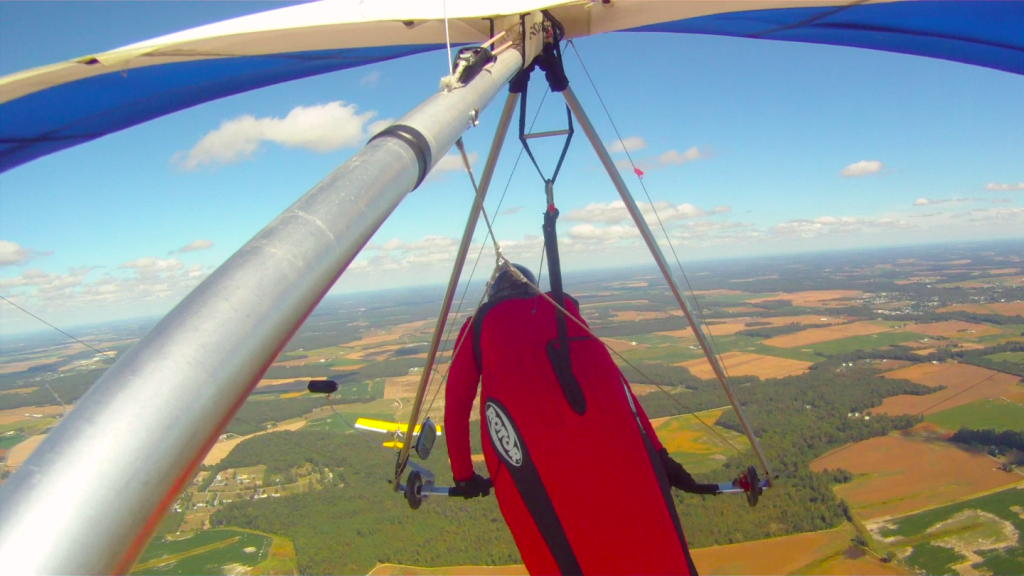
If that tug dives any more dangerously than it's diving now then the wings will be torn off.
163-080213
http://c2.staticflickr.com/2/1815/42356856690_937fe58750_o.png
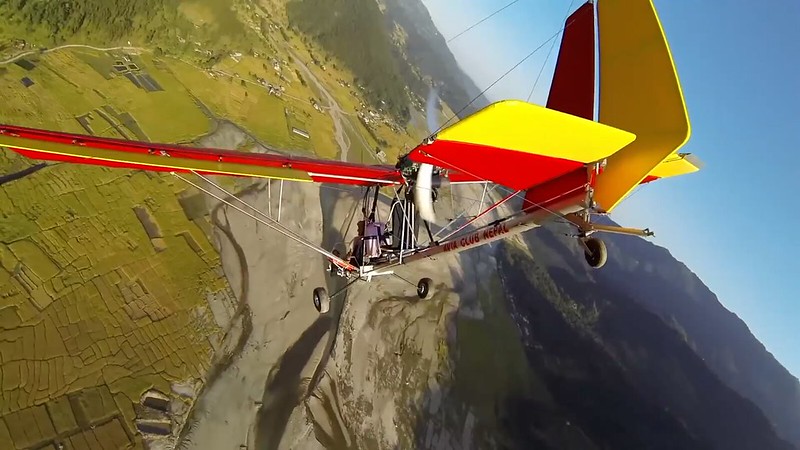
Pull up, Bobby! PULL UP!! For the love of God pull up before you tear your wings off in this dangerous dive!
This dangerous dive is what happened when Chris Bulger (U.S. team pilot) was towing John Pendry (former world champion) years ago. The release failed to operate in this case...
Good thing yours operated so flawlessly in your situation. Any momentary reduction in your control authority could've resulted in some really unpleasant consequences.
...and Chris was fatally injured.
Bullshit. He free-fell a minimum of a thousand feet. He was instantaneously splattered.
However Neal kept me on line until I had enough ground clearance, and I believe he saved me from injury by doing so. I gave him a heart-felt thank you.
WHAT?
Towing Aloft - 1998/01
Pro Tip: Always thank the tug pilot for intentionally releasing you, even if you feel you could have ridden it out. He should be given a vote of confidence that he made a good decision in the interest of your safety.
You THANKED him for NOT releasing you in a low level lockout? What's gonna happen now with the NEXT glider pilot in a low level lockout behind Neal?
http://www.chgpa.org/forums/viewtopic.php?f=2&t=2467
weak links
Jim Rooney - 2007/08/01 19:49:30 UTC
It's more of this crappy argument that being on tow is somehow safer than being off tow.
And now that Davis has become happy with Tad-O-Links and has everyone and his dog flying with him what hope does the glider pilot have for long term survival?
This incident has absolute shit to do with 1985/07/17 Chris Bulger / John Pendry. They were over a thousand feet in glassy smooth late afternoon air when Chris made a hard right turn for no reason, tumbled, was ejected from his trike. They were going pro toad with total shit equipment on both ends. You don't TUMBLE after a high glider puts you into a DIVE. You tumble after a severe STALL. And Dragonflies don't tumble 'cause they have tails. So if you're really worried about tumbling then don't tow with a trike.
We don't give a flying fuck about 1985/07/17 'cause we've never had any reporting on it that makes any actual sense and we know how to aerotow in violent thermal conditions without tumbling tugs. Subsequent to 1985/07/17 we've had untold hundreds of thousands of ATs and never had anything remotely resembling a rerun. Somebody cite me an incident of even a tug stall that didn't result from an engine failure or substantial tug pilot error on takeoff.
Note Mark Knight going down with his Dragonfly 2014/02/24 in glass evening air nowhere near a glider airborne or working on getting so. How come there's total zero interest in getting the slightest ghost of an explanation/understanding about that one?
The pilot in the accident under discussion was an aerodynamic engineer. He had altered his glider by lengthening the front cables and shortening the rear cables to move his base tube back. The amount was reportedly 10 centimeters, or about 4 inches. This is well within the acceptable range, according to Gerolf Heinrichs, the Litespeed designer.
Well fuck you and Gerolf Heinrichs, the Litespeed designer, then. It's well within the acceptable range if it's been flight tested to demonstrate compliance with HGMA and/or DHV certification standards. This bullshit brings:
http://ozreport.com/9.098
The thin 1500 pound aerotow bridle
Davis Straub - 2005/05/03
Bob Lane said that Quest Air sold over forty of their bridles (and Bob sold fifteen or twenty) during the Nationals. The Quest Air bridles use thicker Spectra and are designed not to whip around and accidentally tie themselves to the carabineer. Bob says his bridles will not do this either.
to mind. (Note the date - four months after publication of Pagen's bullshit.)
Also... Never in the entire world history of hang gliding has a glider shipped from a manufacturer certified to aerotow. And here we have Gerolf telling us it's perfectly OK to shift the control bar back four inches and eliminate the upper bridle connection. Suck my dick - both of you douchebags.
Why the pilot altered his bar position in this manner is anyone's guess, but...
...who really gives a rat's ass. The important thing is that the AT operation at which he was flying determined that he was totally good to go. And they stand by that assessment - 'cause to this very day we've never heard a single whisper of a word from any of them to any extent to the contrary.
Factors that attributed to the accident in various degrees were the pilot's experience, the conditions and the alteration of the base tube.
And the factors that CONtributed to the "accident" were a bunch of douchebags who knew all this and decided he was perfectly good to go in these conditions and hooked him up accordingly.
It is difficult to assess the effect of the turbulence, but suffice it to say that it was strong enough to project him upward, well above the tug.
I so do hate it when the turbulence is strong enough to project me upward, well above the tug, without even rolling me a degree port or starboard. That's the job of strong thermal lift and I really resent turbulence that feels perfectly OK muscling in and taking over the function of lift.
http://ozreport.com/forum/viewtopic.php?t=30971
Zach Marzec
Paul Tjaden - 2013/02/07 23:47:58 UTC
The launch started on the main runway at the north end (2,000 feet long) and was normal until at approximately 50 feet in altitude when the tow plane hit extremely strong lift elevating it quickly and abruptly. Because of the length of the tow line, it was a few seconds later when Zach's glider entered the same strong lift and he was at an estimated 100 to 150 feet in altitude at this time.
When the lift/turbulence was encountered, the weak link on the tow line broke as the nose of the glider pitched up quickly to a very high angle of attack. Apparently, the glider stalled or possibly did a short tail slide and then stalled and then nosed down and tumbled. Eye witnesses said the glider tumbled twice and then struck the ground with the base tube low. Due to the extremely low altitude, there was no time for the pilot to deploy his reserve parachute.
Beyond these facts anything else would be pure speculation. I have personally had numerous weak link breaks on tow, both low and high, after hitting turbulence and have never felt in danger of a tumble. I have witnessed countless others have weak link breaks with no serious problems. We train aero tow pilots how to handle this situation and I am certain that Zach had also encountered this situation many times before and knew how to react properly. Apparently, Zach simply hit strong low level turbulence, probably a dust devil that could not be seen due to the lack of dust in Florida, the nose went too high and he tumbled at a very low altitude.
Strong dust devils in Florida definitely do exist even though they are rare. My wife had a near miss when she encountered a severe dusty a couple years ago and I almost lost a brand new $18,000 ATOS VX when it was torn from its tie down and thrown upside down.
I wish I could shed more light on this accident but I am afraid this is all we know and probably will know.
Note the u$hPa / Flight Park Mafia pattern. Smooth strong fat thermal lift gets morphed to turbulence - an invisible dust devil if you think you can get away with it. Thermal lift is a GOOD thing. The reason we show up is 'cause the forecast is indicating fantastic thermal conditions. At a mountain ramp launch in light air we WAIT FOR the monster thermal to blast up the slope so we can centerpunch it for the safest and most effective launch. So a thermal couldn't possibly be an AT launch hazard. Then it would only be safe and sane to tow up on sled days. Make it turbulence. Turbulence is never predictable and can bite you even on sled days when you're least expecting it. But...
http://www.hanggliding.org/viewtopic.php?t=27396
Scooter tow faillure... or Never Land On Your Face
Mitch Shipley - 2012/10/22 19:04:16 UTC
We engage in a sport that has risk and that is part of the attraction.
Finally, the alteration of the basetube position could have been a contributing factor because he certainly would have had more pitch authority if he hadn't done that. It is impossible to tell, but perhaps the thermal that lifted him would not have done so as severely if he had had a bit more pitch travel.
Ya think? Asshole? Or maybe he was suddenly too fuckin' clueless to pull the bar back as much as he needed to. Guess we'll never really know...
http://ozreport.com/forum/viewtopic.php?t=30971
Zach Marzec
William Olive - 2013/02/27 20:55:06 UTC
Like the rest of us, you have no idea what really happened on that tow.
We probably never will know.
Jim Rooney - 2013/02/28 01:17:55 UTC
Well said Billo
I'm a bit sick of all the armchair experts telling me how my friend died.
Ah but hg'ers get so uppity when you tell them not to speculate.
...for sure.
What We Can Learn
Absolutely nothing. Anything and everything of the least importance you already published precisely seven years ago in the excellent book, Towing Aloft, by Dennis Pagen and Bill Bryden. And even today, well over two decades later, everything stands complete and totally rock solid.
To begin, alteration of our gliders should not be done without full agreement and guidance from the factory or their trained representatives.
Fuck the factory and their trained representatives. The only thing we know about them is that they're capable of producing gliders that can pass certification standards established in the Seventies - none of which pertain to any form of towing and any situation in which the pilot isn't fully prone with both hands on the control bar.
Even with such approval, be aware that the factory might not know how you will be using your equipment.
Yeah, Wills Wing has never heard of towing before. That's why we have Flight Park Mafia opinions to tell us whatever they think we wanna hear.
Changing the pitch range of a glider is a fairly serious matter and should only be done with full understanding of all the effects.
http://www.hanggliding.org/viewtopic.php?t=22233
Looking for pro-tow release
Zack C - 2011/06/16 03:14:35 UTC
I've never aerotowed pilot-only but it is my understanding that this configuration pulls the pilot forward significantly, limiting the amount he can pull in further.
Davis Straub - 2011/06/16 05:11:44 UTC
Incorrect understanding.
Secondly, over-the-top lockouts are not frequent, but common enough in big-air towing that tow pilots should all have a plan to deal with them.
Stuff the bar to your knees and pray that your Infallible Weak Link doesn't increase the safety of the towing operation and your tug pilot doesn't make a good decision in the interest of your safety.
Think about this:
Are you really sure you want us thinking, Dennis?
When we are lifted well above the tug, the tow system forces becomes similar to surface towing, with the limit of tow force only being the weak link.
Are you really sure you wanna mentioning the weak link in this report, Dennis? Do you really want people thinking about what would've happened if yours had done what you said it would in this situation?
But as long as you've brought it up... What were you using and how come you haven't told us anything about it? And please don't bother telling us anything about what you were using for a release.
The susceptibility to a lockout is increased in this situation.
But you're totally OK on the stall issue. You have a weak link which very clearly will provide protection from excessive angles of attack, high bank turns and the like for this form of towing.
My experience leads me to believe that a strong thermal hitting when low can push you vertically upwards or sideways before you have time to react.
- Good thing you had that EXPERIENCE to LEAD you to BELIEVE that a strong thermal (or turbulence) hitting when low can push you vertically upwards or sideways before you have time to react. There's no fuckin' way any of us mere mortals could've just thought through a scenario like that.
- You HAD TIME to REACT. There's never been a halfway competent Hang One out there who wouldn't start pulling in within a millisecond of his nose going up. The problem was that you were using total shit equipment and decertified your glider and came within a few inches of getting killed in spite of all your reaction bullshit.
If this happens when I am low, I fight it as hard as I can until I have clearance to release safely.
- You keep on doing that. The gene pool will be a lot better off that way after another rerun or two.
- That cheap bent pin piece o' shit you're calling release only allows a safe release when everything's going right. And under any significant load situation it becomes totally inoperable. And I've never heard you respond to anybody concerning any of those well documented incidents - several of which have involved Flight Park Mafia professionals.
If I am high above the tug, I stay on line with the bar pulled in as far as possible and keep myself centered if at all possible.
How 'bout if it's not at all possible? I've looked through your excellent book and haven't been able to find any relevant incidents or scenarios.
I fully expect the tug pilot to release from his end if necessary for safety...
For whose safety? Yours?
Towing Aloft - 1998/01
Pro Tip: Always thank the tug pilot for intentionally releasing you, even if you feel you could have ridden it out. He should be given a vote of confidence that he made a good decision in the interest of your safety.
What if nobody's ever thanked him for intentionally releasing him? Given the profile of Joe Hang Glider Pilot I'd be astonished to see one release from his end.
http://groups.yahoo.com/group/skysailingtowing/message/6726
Give 'em the rope? When?
William Olive - 2005/02/11 08:59:57 UTC
I give 'em the rope if they drop a tip (seriously drop a tip), or take off stalled. You will NEVER be thanked for it, for often they will bend some tube.
http://ozreport.com/forum/viewtopic.php?t=14221
Tad's release
William Olive - 2008/12/24 23:46:36 UTC
I've seen a few given the rope by alert tug pilots, early on when things were going wrong, but way before it got really ugly. Invariably the HG pilot thinks "What the hell, I would have got that back. Now I've got a bent upright."
The next one to come up to the tuggie and say "Thanks for saving my life." will be the first.
Remember...
http://ozreport.com/9.127
Robin's accident
Davis Straub - 2005/06/14
Once the glider bounces off the ground, Robin is never able to get the glider lined up correctly behind Bobby Bailey and drifted continually to the left, locking out and crashing from a low altitude. If Bobby had released Robin at any time before the last two or three seconds he would likely not have crashed, at least not from a lockout.
I think we need to go around proactively thanking these guys - BEFORE we get into a situation in which we NEED the tug pilot to release from his end if necessary for safety.
But I guess you mean for HIS safety. So you're saying that there could be a situation in which the front end dump lever could save the tug at the expense of killing the glider - at under Standard Aerotow Weak Link permitted tension. Thanks bigtime for putting that down in black and white for all eternity and undermining every punctuation mark's worth of crap you've written about weak links.
Textbook example:
http://ozreport.com/20.102
The Quest Air Open Part 2
Davis Straub - 2016/05/22 02:26:08 UTC
Today we experienced a fatal aerotowing accident when a fellow pilot locked out very soon after coming off the cart. He plowed head first straight into the ground from too high right in front of us.
Fausto Arcos who was in the front of the launch line just in front of me watched the whole thing and said it was a "classic" progressive lockout. The pilot needed to release much earlier before it became non-recoverable.
The pilot's weak link broke at apparently the same time as tug pilot gave him the rope. The tug pilot gave the hang glider pilot the rope because the hang glider pilot's glider was pulling the tow plane's tail to the east forcing the tug toward trees that the tug with this drag would not be able to get above. All of the hang glider's undersurface was visible in the tug pilot's mirror.
Jeff Bohl is doomed by his pro toad bridle, easily reachable release, mistake of taking his hand off the control bar for a fraction of a second near the beginning of the short tow, underpowered 582 tug. April keeps him on as long as possible before her crash becomes inevitable and hits the lever. That would've killed him just as instantly if the Tad-O-Link hadn't blown a tenth of a second before. She flies away totally unscathed. (Physically anyway.)
...but in the case of a malfunction, I would release before endangering the tug.
'Cause you're such a noble, altruistic individual. You're total full o' shit. Jeff Bohl was a highly experienced and qualified airliner captain. You'd have done exactly what he did. Any of us would have.
You won't even ever admit that your excellent book was a total load of deadly Industry crap and publish a legitimate towing manual guide to get the kill rate down a bit.
We are taught to release at the first sign of trouble...
- Who's teaching us this shit and what are their qualifications?
- Show us:
-- some equipment that allows us to safely release at the first sign of trouble
-- one single video in which someone actually releases at the first sign of trouble
- In thermal soaring conditions the first sign of trouble is the cart starting to roll. We need to assume from that point until we clear the kill zone that we're about to get hit by something and respond as the situation dictates. And that's virtually always by instantaneous decisive control inputs and virtually never by a release from either end.
- Right after the cart starts rolling there are two pilots with ability to respond to trouble. Five months after you publish this crap Holly's gonna start getting in trouble by hooking up pro toad with an easily reachable release. The first sign of trouble after the cart starts rolling was Holly starting to oscillate shortly after coming off the cart. She was doing everything of which she was capable to deal with the trouble and releasing wasn't an option for her. The ball was totally in Tex's court and the proper response was to ease off on the gas. He didn't and she got two thirds killed on a career ending crash. And we somehow managed to miss your evaluation and comments.
...and I fully support that general policy...
Great. What general policy on AT weak links are you fully supporting these days and why?
...but in some cases, the trouble happens so fast and is so powerful that a release low would have severe consequences.
Yeah, but we are taught to release at the first sign of trouble and you fully support that general policy so I'm not really seeing how any of us really have any other options.
In my case, I was instantly high above the tug with a strong turn tendency and a release at that point would have been ugly.
But all those other times you released at the first sign of trouble and everything turned out fine. Now all the sudden with no track record upon which to base anything you suddenly wanna become a test pilot?
The main point for us to understand is that we must gain our experience in gradually increasing challenges so we can respond correctly when faced with different emergencies.
Sorry. I gotta stay with the general policy and long track record. My general rule is "no funky shit". I don't like people reinventing the wheel and I don't like test pilots. As with many changes in avaition, change is approached with a bit of skepticism. Rightfully so. There's something to be said for "tried and true" methods... by strapping on somehting new, you become a test pilot. The unknown and unforseen become your greatest risk factors. It's up to each of us to individually asses the risks/rewards for ourselves. It amuses me how many people want to be test pilots. It amuses me even more that people... A) Don't realize that "test pilot" is exactly what they're signing up for and B) actually testing something is a far more involved process than "I think I just try out my theory and see what happens".
It should be made clear again that a weak link will not prevent lockouts...
But don't worry any 'cause a weak link is physically incapable of breaking at the worst possible time, when the glider is climbing hard in a near stall situation. Donnell Hewett decisively put that rubbish to rest almost forty years ago.
...and a hook knife is useless in such a situation, for the second you reach for it you are in a compromised attitude.
Not so of course for an easily reachable shoulder mounted bent pin barrel release. We just read your account and that action had no part whatsoever in your glider instantly whipping to the side in a wingover maneuver. And even if it had you weren't put in anything remotely resembling a compromised attitude at that point.
Thirdly, experienced pilots should be aware that towing only from the shoulders reduces the effective pull-in available to prevent an over-the-top lockout.
I'm sure they are.
http://www.hanggliding.org/viewtopic.php?t=22233
Looking for pro-tow release
Davis Straub - 2011/06/16 05:11:44 UTC
Incorrect understanding.
It's just the inexperienced pilots - like Holly Korzilius with 75 ATs under her belt, and everyone participating in, helping with, advising her on, observing her 2005/05/29 Blue Sky smooth air pro toad launch effort who don't really get this.
Like many pilots, I prefer the freedom of towing from the shoulders...
Me too. I just LOVE all the FREEDOM you get with respect to pitch control range. At normal Dragonfly tow speeds you can go from bar fully stuffed:
03-02421
http://farm8.staticflickr.com/7200/14097626583_03972773c6_o.png
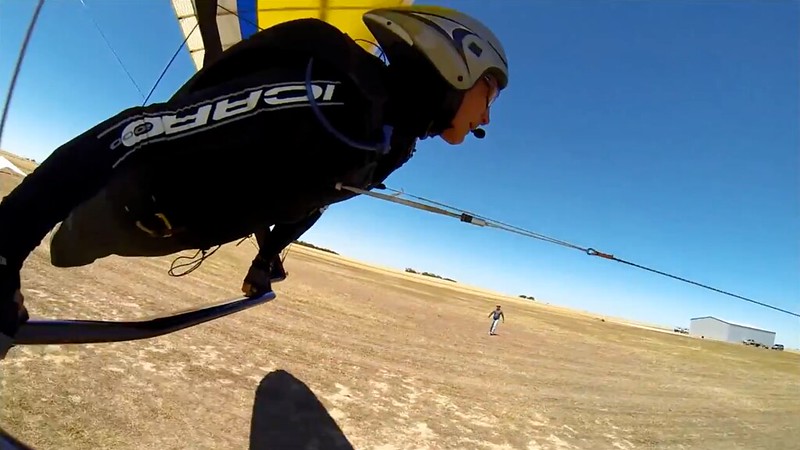
to bar fully stuffed with your knees drawn up to your chest:
119-083237
http://c1.staticflickr.com/1/942/40764720725_f8667740e7_o.png
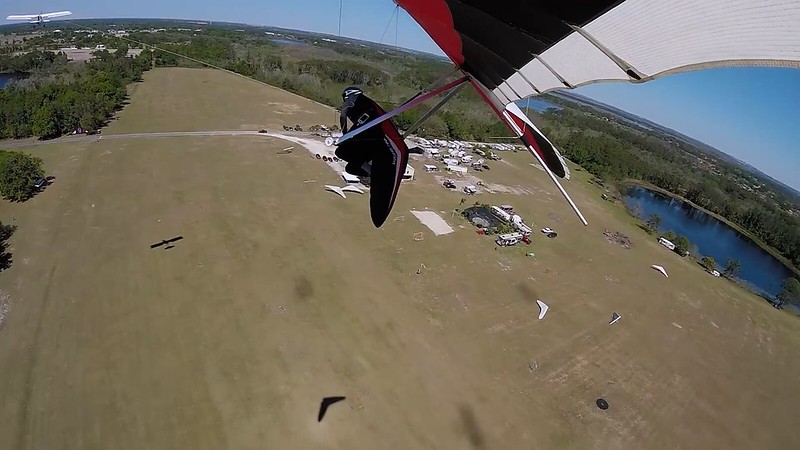
to stay down level with the tug. Beats the crap outta three point towing...
http://ozreport.com/forum/viewtopic.php?t=9230
Departing the launch cart
Jim Rooney - 2007/08/24 12:20:06 UTC
Bad habit #1, not flying the glider... just letting the tug drag you around by the nose, combines with the fact that pro towing REQUIRES the pilot to do something (not let that bar move). So instead of holding the bar where it is, bad habit pilot just lets the tug pull him. This pulls him through the control frame with the same effect as the pilot pulling in... a LOT.
I've seen gliders go negative while still on the cart this way.
The results are never pretty.
...when you're just letting the tug drag you around by your nose. Who wants' that when you can go up pro toad and be REQUIRED to...
http://2.bp.blogspot.com/-9Ek9_lFeSII/UZ4KuB0MUSI/AAAAAAAAGyU/eWfhGo4QeqY/s1024/GOPR5278.JPG
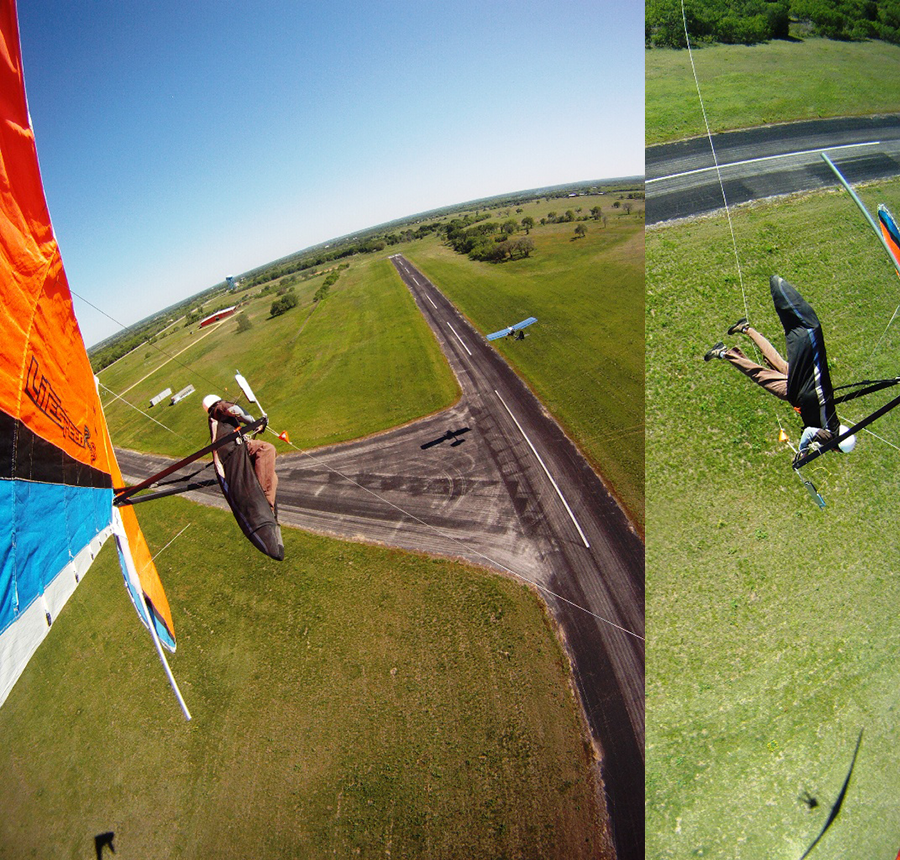 http://2.bp.blogspot.com/-Xh_NfnOcUns/UZ4Lm0HvXnI/AAAAAAAAGyk/0PlgrHfc__M/s1024/GOPR5279.JPG
http://2.bp.blogspot.com/-Xh_NfnOcUns/UZ4Lm0HvXnI/AAAAAAAAGyk/0PlgrHfc__M/s1024/GOPR5279.JPG
...DO something.
...but I am aware that I must react quicker to pitch excursion.
Well you certainly are NOW. I have no freakin' clue why at the Big Spring Nationals you were just hanging around with your thumb up your ass after you watched Neal going up like an ICBM upon being hit by the mother of all thermals, being lifted more than he had ever been in his heavy trike. And I just have no clue what a muppet such as myself would be doing. Maybe it's a good thing that I'm fairly comfortable flying with the tyranny of a two point bridle trimmed to put my control bar in normal free flight trim position.
Sometimes reactions aren't quick enough and emergency procedures must be followed.
Really? I thought the whole reason we flew with a Standard Aerotow Weak Link...
27-40324
http://farm9.staticflickr.com/8394/8696380718_787dbc0005_o.png
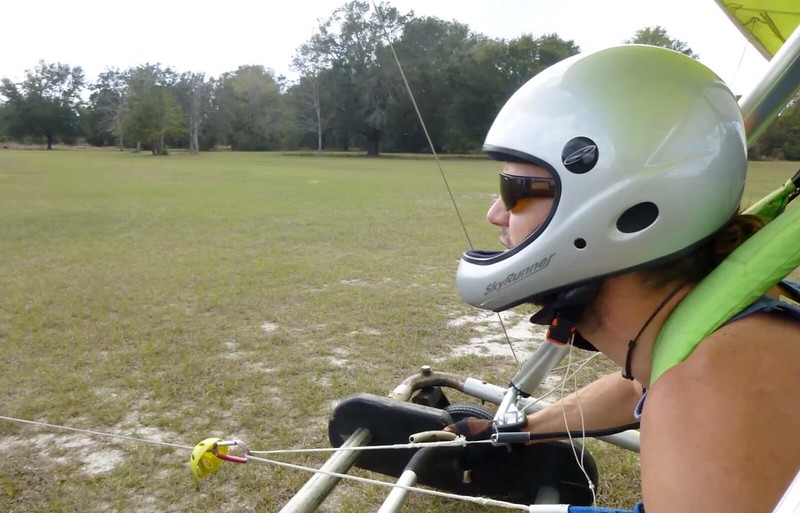
06-03114
http://farm4.staticflickr.com/3728/9655895292_f4f808fb0e_o.png
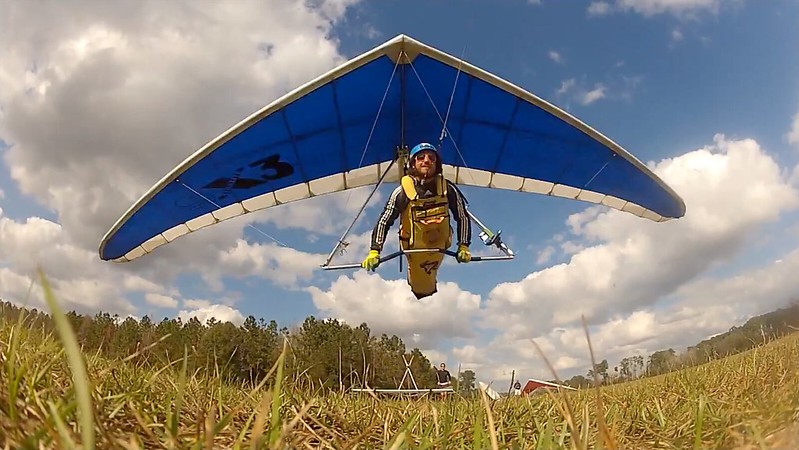 http://c1.staticflickr.com/5/4174/34261733815_bfb41c49d8_o.jpg
http://c1.staticflickr.com/5/4174/34261733815_bfb41c49d8_o.jpg
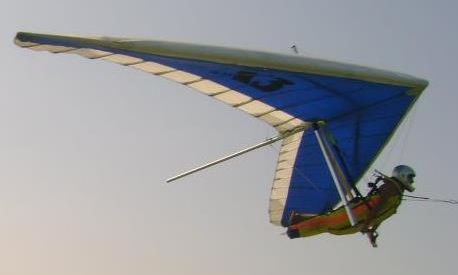
...was for emergency situation in which it's IMPOSSIBLE for us to react to pitch excursions.
http://4.bp.blogspot.com/-bRrpHNa68iY/UQ6Pv9gRZyI/AAAAAAAAjTg/Hc22bx5122Q/s2048/20943781_BG1.jpg

That's what it says in the excellent book, Towing Aloft, by Dennis Pagen and Bill Bryden.
It seems to me that we shouldn't be overly eager to encourage lower airtime pilots to adopt this more advanced method of aerotowing.
Yeah, lower airtime pilots are rather notorious for their slow reaction time. And their arms average about three percent shorter than most of your higher airtime pilots. I think we should just be moderately eager to encourage lower airtime pilots to adopt this more advanced method of aerotowing.
Normally, we tow topless gliders with about 1/3 VG pulled to lighten pitch forces and increase speed. Intermediate gliders are often towed as much as 1/2 VG pulled for the same reasons. Pilots must understand these matters when aerotowing.
Yeah, that's pretty critical. Every season we needlessly kill or critically injure three or four AT pilots 'cause they're not pulling on enough VG. When will people ever learn?
Pilots must understand these matters when aerotowing.
Goes without saying. But aren't you forgetting:
http://ozreport.com/forum/viewtopic.php?t=31052
Poll on weaklinks
Brad Gryder - 2013/02/21 23:25:31 UTC
There's also a way to swing your body way outside the control frame so it stays up there while you reach out with one hand and release. Come on - do some pushups this winter.

See if you can advance up to some one-arm pushups.
Finally, I think it is appropriate to remind all dealers, instructors and pilots in general to inform their customers and friends that the new topless gliders exhibit the notable bar movement with VG travel as explained above. As such, it is normal to take off and land with 1/4 VG on in order to place the bar in a position to roll easier and to reduce the pitch pressure. It is much easier to maintain safe control speed with the VG pulled 1/4.
Also that:
http://1.bp.blogspot.com/-2lk6hbjuJ-c/Ujh-ENPLQrI/AAAAAAAA3IQ/vh46chqQX4M/s1600/JRS_0542.JPG

Steve Pearson, Wills Wing designer since the beginning of time. That's OK for him. Also for any higher airtime Three with sufficiently quick reactions.
All this absolute ROT five months before Holly goes in and two thirds kills herself two AT parks / less than 220 miles south of Dennis's driveway. Everything's portrayed as an irresponsible three pointer going pro toad minus proper training, certification, permission. Not a punctuation mark's worth of response from Dennis.
